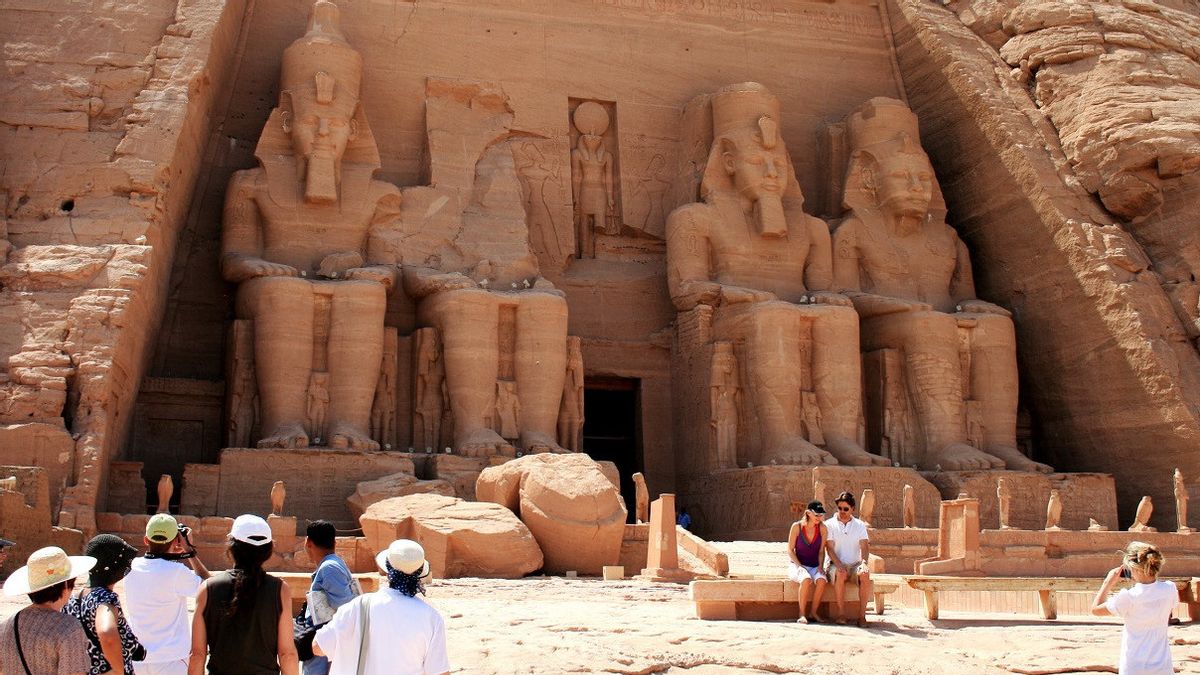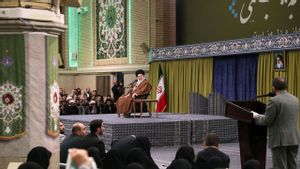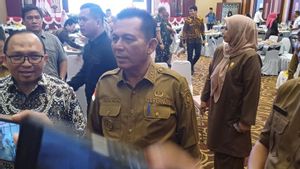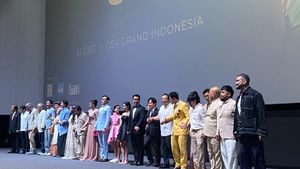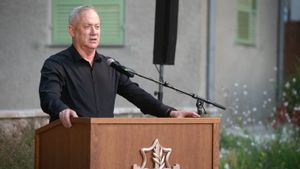JAKARTA - The ancient mummies of the Egyptian royal pharaohs will emerge from their resting place this weekend. Parade the streets of Cairo City in search of a new home.
What sounds like a movie plot is actually part of a lavish celebration of Egyptian history, as well as a project to move some of its greatest treasures to a new high-tech facility.
On Saturday 3 April, the mummy of Ramses the Great and 21 of his fellow pharaohs will take part in what is known as 'The Pharaoh's Golden Parade', a highly anticipated event organized by the Egyptian Ministry of Tourism and Antiquities.
The celebrations will include chariots, a choir singing in the ancient language and a large number of film stars and high-ranking officials, but Egyptian authorities have kept the official details of the event secret.
"It's a surprise," Ahmed Ghoneim, executive director of the National Museum of Egyptian Civilization, the institution that will be the final resting place of the mummies, told CNN.

However, it is difficult to make an event of this size a surprise, especially during the recent rehearsals taking place in downtown Cairo. Eager Egyptians took photos of custom-made mummified vehicles decorated with ancient golden motifs and rushed to post them on social media.
The last stepThe purpose of the parade is to remove 18 Egyptian kings and four queens, along with their coffins and possessions, from their old home in the Egyptian Museum.
They will be transported five kilometers (three miles) south, to their new high-tech retreat at the National Museum of Egyptian Civilization (NMEC).
NMEC is not the Great Egyptian Museum in Giza which will also open to the public later this year. NMEC is a completely different museum in Cairo's Fustat neighborhood that will complement the trio of Egyptian-themed museums that are must-visit in and around Cairo. Although NMEC has partially opened in 2017, the parade will mark the opening.
"This is the presidential opening. And the completion of the Hall of Royal Mummy which looks like a unique museum experience. The whole idea is not a mummy, the whole idea is how you present the mummy. This is how you tell the story, the environment, the atmosphere you feel when you enter," he explained. Ghoneim.
Ghoneim said visitors entering the Royal Mummy Hall would experience something akin to entering a tomb in the Valley of the Kings.
All 22 royal mummies belong to the New Kingdom, an era in which graves were built underground with hidden entrances to ward off grave raiders. A world apart, and some 600 years old, from the flamboyant royal counterpart of the Old Kingdom who built the colossal pyramid tombs.
Dr. Mostafa Ismail, head of conservation at the Mummy Conservation Lab and Storage Room at NMEC, led a team of 48 people to prepare the royal mummies.
The conservation process, he told CNN, involves placing each mummy in an oxygen-free nitrogen capsule that can keep it durable without being damaged by the effects of moisture, especially the ones we talk about bacteria, fungi and insects.

The capsule is surrounded by a soft material that distributes pressure and reduces vibration during transport. When the mummy arrives at NMEC, the display unit will have exactly the same conditions as the nitrogen capsule.
"So there will be no surprises for the mummy, when we take it out of the box and put it in this unit," added Ismail.
Each mummy will accompany any items found beside them, including their coffins. The screen will also display a CT scan that reveals what's under the wrapping, and sometimes there are fractures or illnesses that befall royals.
"The main thing we want visitors to know about these mummies is how they have been preserved for such a long time."
When asked if his team discovered anything new about the mummies in preparing them to move, Ismail commented: "a lot of things," but nothing he would reveal before the parade. So there are more surprises to come.
The Royal Mummy Hall will no doubt be a major draw for visitors to the National Museum of Egyptian Civilization, but Executive Director Ahmed Ghoneim hopes to position the museum differently from neighboring institutions.
"I'm not as focused on the Pharaoh era as most people think. Most Egyptians and non-Egyptians, every time they go to an Egyptian museum they think they are going to see the pharaoh. Here I organize myself differently, I tell a different story. , across history and to the present, "he explained.
The museum will open to the public the day after the parade, on April 4, with the Royal Mummy Hall opening two weeks later on April 18. The Pharaoh's Golden Parade will be broadcast live on the YouTube channel of the Ministry of Tourism and Antiquities.
The English, Chinese, Japanese, Arabic, and French versions are automatically generated by the AI. So there may still be inaccuracies in translating, please always see Indonesian as our main language. (system supported by DigitalSiber.id)
